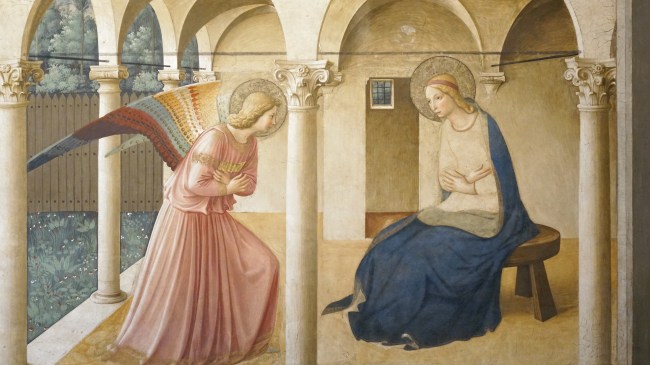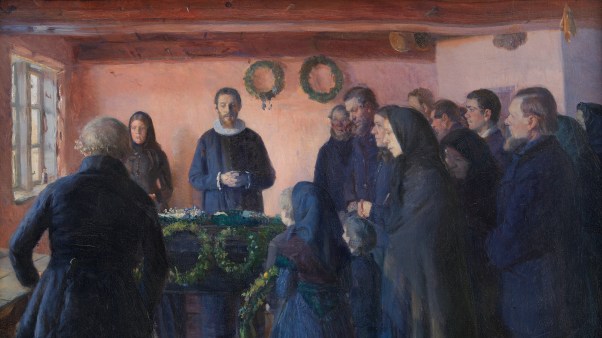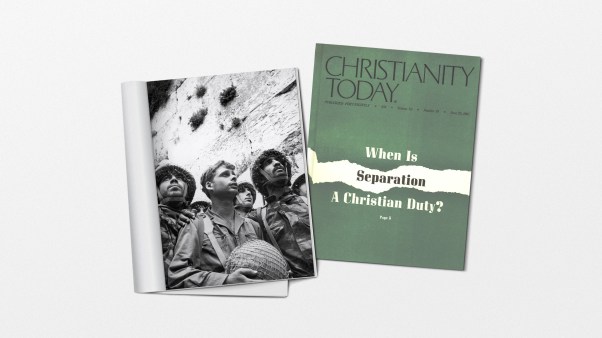In recent years, our news feeds have been filled with examples of leaders and public figures abusing their power. Amid all the pain and confusion, author and apologist Amy Orr-Ewing finds encouragement in the stories of Advent, which speak to questions of suffering and injustice more than we sometimes notice. In her new devotional, Mary’s Voice: Advent Reflections to Contemplate the Coming of Christ, she offers a dynamic portrait of the woman at the center of the Incarnation, highlighting her boldness in proclaiming the truths of Scripture in a dark world. Author and Bible teacher Taylor Turkington spoke with Orr-Ewing about Mary’s humble faith and the significance of God choosing a teenage girl in an occupied country to bear his Son.
What compelled you to write a book on Mary?
I’ve devoted much of my ministry to speaking on and writing about apologetics and suffering. And in more recent times, I’ve taken up questions of power and injustice.
The Mary theme came by surprise. Recently, I was struck by hearing her words in the Magnificat in a dark time in my own life. I had been supporting a victim of sexual abuse who was giving testimony in the criminal trial of the abuser. After a day in court, I went to a nearby cathedral for Evensong, an Anglican service of evening prayer and worship. When the choir sang the Magnificat, it absolutely hit me between the eyes. “He will bring the mighty down from their thrones,” they sang, as this perpetrator who’d once exercised enormous power sat on trial. It moved me deeply to hear Mary’s words speaking so powerfully into the situation and pointing us to Jesus.
What would you say has kept us from hearing Mary’s voice well?
The rush of the Christmas season often loads a lot of pressure onto us. Especially if you’re working in ministry, there’s a huge amount of emotional labor and social output involved, all of which can present distraction.
And culturally, the retelling of the Christmas story often happens with Nativity plays. In these settings, Mary is a static figure. In much of the art that depicts her, Mary is caught in this perpetual moment of being a new mother holding a new child. And of course, in the Protestant tradition, there are fears of overdoing Mary and we end up laying her to one side for fear of getting it wrong theologically.
As I studied Mary, I realized that I’d failed to really hear her voice and her words in Scripture. And as I began to listen, I discovered this deep resonance, both theological and apologetic, in what she brought to the table.
Mary, as you remind us, was a young, vulnerable woman living in an occupied country. What can we learn about power, humility, and oppressed people from her story?
In writing the book, one of the things I found most moving was asking, Who does God interact with? Who does God involve in the redemption story? Apart from the Lord Jesus, the most significant character involved in the Incarnation account is Mary.
In our society, women experience various levels of inequality, although that’s getting better all the time. But in that cultural moment, centering a woman in the way the Bible does is just extraordinary. And it really speaks of who our God is, that she plays this role.
In my family, we welcomed two refugee women from Ukraine this year. Hearing their stories reminded me of Mary’s experience living under political oppression and occupation. That’s the person to whom God reveals the Incarnation. It gives us a beautiful picture of what the Christian faith is going to mean, and who it’s going to be for.
 WikiMedia Commons
WikiMedia CommonsIn the book, you show how Mary draws on Old Testament passages and themes that we often skim over. How would you hope Mary’s Voice equips people as they read the Bible?
The book takes us through the days of Advent, and each day there’s a reading and a reflection that really draws out the biblical resonances. Something that surprised me while working on it was how steeped in the Old Testament Mary was. In sections on the Magnificat, you see how she refers to 1 Samuel, to the story of Hannah. She also refers to different psalms and to the experience of the children of Israel in the wilderness.
I hope, as readers take this journey, that they will see the rich fabric being woven together by God with great intention. I hope they see the details of prophecies in the Old Testament and how they’re fulfilled in Jesus.
You provide images of art and examples of historical prayers in the daily readings. What role do these serve?
We have been made in the image of God to know him and grow in our relationship with him in multiple dimensions. That includes the intellect, of course. But we’ve also been given gifts of creativity, and many people find the visual arts helpful for deepening reflection.
Some images in the book come from old, prepaper manuscripts like the Book of Hours or the Vaux Psalter, a book of psalms owned by a woman in 13th-century England. Those manuscripts contain beautiful depictions of stories from the life of Mary. I’ve also included examples of medieval art, like a beautiful Annunciation painting from the Italian artist Fra Angelico. There is Renaissance art as well, and even some contemporary pieces, including a previously unseen picture of Mary from Charlie Mackesy, a contemporary artist who won an Oscar for the animation of his book The Boy, the Mole, the Fox, and the Horse.
Mary’s Voice is hopefully rich for the senses. There’s also a prayer every day, drawn from the liturgies of the church. These may be especially helpful when we’re lamenting or going through a difficult time. Praying words written by other Christians can be a meaningful way of connecting with God.
You call Mary a prophet, a writer of Scripture, a teacher, and a leader. What are some lessons and principles we can draw from her life?
Rather than seeing Mary as stuck in that perpetual role of early motherhood, I began to see how amazing it is that her words are included in the Bible. Luke obviously wrote them down, but Mary remembered them. We also see the unfolding significance of Mary as a historic witness to central aspects of the Christian faith. Luke obviously drew on other eyewitnesses for his gospel, but according to the earliest tradition, she was his key source. There were events he recalled that only Mary knew of.
This tells us something of what it means to be a witness, to be someone who speaks of and records the truths of God. And we see Mary engaging in that teaching role by passing on these truths to us. Of course, Mary is one of the key witnesses to the Crucifixion. She’s also there in the early church, leading others in worship. There are early depictions of her with two hands raised in blessing, an indicator of a much older woman leading God’s people in prayer.
Finally, we should pay attention not only to Mary’s humility but also to her confidence. Imagine having the confidence to proclaim what Jesus has come to do, to proclaim that your soul magnifies the Lord (Luke 1:46), and to say all this in defiance of all the oppression and darkness around you. It’s encouraging to know that, whatever our qualifications or status, we can have this deep theological confidence in the reality that Jesus is Lord of all.













